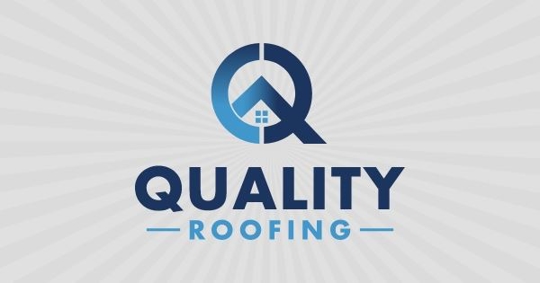Florida may be the ideal place to live. However, the coastal climate can wreak havoc on a roof. Strong winds, high temperatures, high humidity, UV rays, and salty air can accelerate the deterioration of even the most reliable roofing materials. As a homeowner, your primary concerns when considering roofing material are to protect your family and create an energy-efficient environment inside.
So, if you are getting ready to schedule a roof installation, you may want to consider adding a metal roof to your home. Although not as popular as asphalt shingles, more homeowners are turning to metal roofs for their durability, design, overall value, and energy efficiency. Metal can stand up to the Florida climate better than almost any other type of roofing material.
Why Metal Roofs Are Energy Efficient
During the heat of summer, a non-reflective rooftop creates a tremendous amount of heat — far hotter than the surrounding air. Even with good insulation, that heat penetrates roofs and warms up attics and top floors, forcing air conditioners to work overtime just to keep up. The key to avoiding this expensive problem is to replace or treat those roofs with reflective, cool roofing material.
A metal roof offers three elements that create a more energy-efficient environment in your home.
- Emissivity
Home and businesses utilize the emissive properties of metal roofing to keep buildings cool and energy costs low. The coating on metal roofs improves thermal performance with the ability to reflect up to 90% of solar radiation back to the atmosphere rather than transferring it to the building. - Solar Reflectivity
Metal reflects energy from the sun away from the house far better than asphalt shingles, which can absorb the sun’s rays and heat. Modern, energy-efficient metal roofing acts as a giant mirror by reflecting the heat and energy up into the air. - Thermal Resistance
Thermal resistance is the measurement of how well a roofing material resists heat flow. Metal roofs can improve thermal performance by as much as 200% when compared to asphalt shingles. They are exceptional at blocking heat flow from the sun or the surrounding temperatures. - Metal roofs are durable and long-lasting.
- Metal roofs are environmentally friendly.
- Metal roofs are energy efficient.
- Metal roofs are stylish.
- Metal roofs are expensive.
- Metal roofs can be damaged.
- Metal roofs can be noisy.
How Does a Metal Roof Pay for Itself?
While it is impossible to determine how much money you will save by installing a metal roof, the ROI that comes with metal roofing far outweighs other roofing options. A home with metal roofing will increase in value and save you more money in the long run.
Long-Term Savings
When considering a metal roof, you need to look at the long-term investment and your end goals. If you plan to stay on the property for several years, a metal roof is worth the investment and will only increase the value of your home over time. The latest reports suggest that, on average, a metal roof increases home value by 60%.
Energy-Efficiency
As a homeowner, you look at the month-to-month savings of any major home investment. Outside of insulation, your roof is the most important component in determining how much money you save on energy costs. Once you add a metal roof, you can expect to see a 40 to 50% reduction in your energy consumption each month.
Fewer Repairs
Once you install a roof, you do not need to repair it often. Metal roofs are low maintenance and develop fewer leaks over their lifespan. If you schedule a routine professional roof inspection and standard maintenance through the years, you’ll spend very little money repairing your roof.
Longer Performance
Asphalt shingles are designed to last 20 to 30 years. By comparison, metal roofs are built to last 50 to 75 years. They are also designed to withstand wind gusts of 140 to 180 mph, making them ideal for Florida weather during hurricane season. Once you install a metal roof on your home, you’ll likely never have to install another roof again.
Sustainability
According to the EPA, nearly 11 million tons of asphalt shingles end up in landfills annually. So, if you are eco-conscious and looking for a sustainable roofing solution, metal roofs are one of your best options. Metal roofs are made from 100% recyclable materials. You also reduce waste, as metal roofing requires fewer materials during installation.
What to Consider Before Buying a Metal Roof
Growing numbers of people are installing metal roofs in both new construction and roof replacement projects. However, that doesn’t mean that a metal roof is the best choice for you. Before you purchase a metal roof, consider these pros and cons.
Pros
Metal roofs have proven to be energy-efficient, sustainable, and long-lasting. But are they stylish? The answer is yes. When shopping for a metal roof, you can choose from tin, zinc, aluminum, copper, or galvanized steel, in an array of colors, finishes, and shapes. While asphalt might offer 15 to 20 color choices, modern metal roofing comes in more than 100 different colors, including standard, premium, and custom hues.
Cons
Regardless of the benefits of metal roofs, there are some slight drawbacks. Metal roofing material can be more expensive than asphalt shingles. However, you will spend less on maintenance, and your metal roof is likely to last twice as long as shingles. Metal roofing can be dented by heavy snow and ice, as well as larger hailstones. However, this type of weather is rare in Florida. Metal is also traditionally louder than shingles or tile. To deaden the sound of rainfall, the roofing contractor simply installs extra layers of sheathing or insulation.
Get a Free Roof Replacement Estimate
To find out more about our roofing solutions, call (850) 753-0041 or fill out the quick form on our contact page
The post Why Use Energy Efficient Metal Roofs in Warmer Climates? appeared first on Quality Roofing Solutions.

